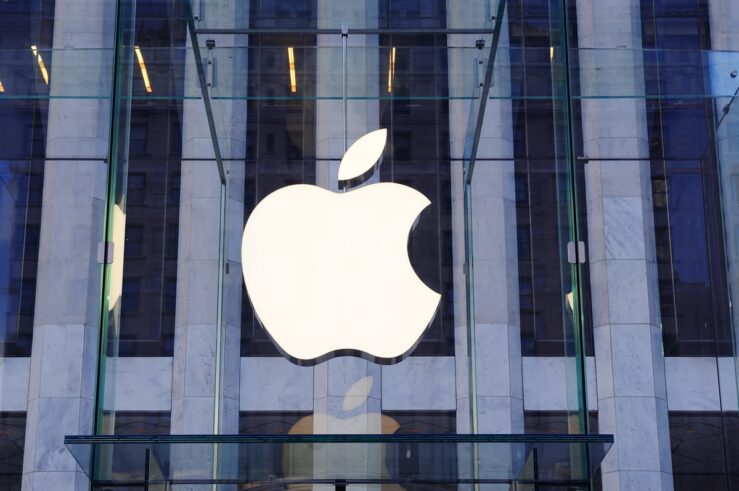
Antitrust policymakers around the world have taken a page out of the Silicon Valley playbook and decided to “move fast and break things.” While the slogan is certainly catchy, applying it to the policymaking world is unfortunate and, ultimately, threatens to harm consumers.
Several antitrust authorities in recent months have announced their intention to block (or, at least, challenge) a spate of mergers that, under normal circumstances, would warrant only limited scrutiny and face little prospect of outright prohibition. This is notably the case of several vertical mergers, as well as mergers between firms that are only potential competitors (sometimes framed as “killer acquisitions”). These include Facebook’s acquisition of Giphy (U.K.); Nvidia’s ARM Ltd. deal (U.S., EU, and U.K.), and Illumina’s purchase of GRAIL (EU). It is also the case for horizontal mergers in non-concentrated markets, such as WarnerMedia’s proposed merger with Discovery, which has faced significant political backlash.
Some of these deals fail even to implicate “traditional” merger-notification thresholds. Facebook’s purchase of Giphy was only notifiable because of the U.K. Competition and Markets Authority’s broad interpretation of its “share of supply test” (which eschews traditional revenue thresholds). Likewise, the European Commission relied on a highly controversial interpretation of the so-called “Article 22 referral” procedure in order to review Illumina’s GRAIL purchase.
Some have praised these interventions, claiming antitrust authorities should take their chances and prosecute high-profile deals. It certainly appears that authorities are pressing their luck because they face few penalties for wrongful prosecutions. Overly aggressive merger enforcement might even reinforce their bargaining position in subsequent cases. In other words, enforcers risk imposing social costs on firms and consumers because their incentives to prosecute mergers are not aligned with those of society as a whole.
None of this should come as a surprise to anyone who has been following this space. As my ICLE colleagues and I have been arguing for quite a while, weakening the guardrails that surround merger-review proceedings opens the door to arbitrary interventions that are difficult (though certainly not impossible) to remediate before courts.
A Simplified Model of Legal Disputes
The negotiations that surround merger-review proceedings involve firms and authorities bargaining in the shadow of potential litigation. Whether and which concessions are made will depend chiefly on what the parties believe will be the outcome of litigation. If firms think courts will safeguard their merger, they will offer authorities few potential remedies. Conversely, if authorities believe courts will support their decision to block a merger, they are unlikely to accept concessions that stop short of the parties withdrawing their deal.
This simplified model suggests that neither enforcers nor merging parties are in position to “exploit” the merger-review process, so long as courts review decisions effectively. Under this model, overly aggressive enforcement would merely lead to defeat in court (and, expecting this, merging parties would offer few concessions to authorities).
Put differently, court proceedings are both a dispute-resolution mechanism and a source of rulemaking. The result is that only marginal cases should lead to actual disputes. Most harmful mergers will be deterred, and clearly beneficial ones will be cleared rapidly. So long as courts apply the consumer welfare standard consistently, firms’ merger decisions—along with any rulings or remedies—all should primarily serve consumers’ interests.
At least, that is the theory. But there are factors that can serve to undermine this efficient outcome. In the field of merger control, this is notably the case with court delays that prevent parties from effectively challenging merger decisions.
While delays between when a legal claim is filed and a judgment is rendered aren’t always detrimental (as Richard Posner observes, speed can be costly), it is essential that these delays be accounted for in any subsequent damages and penalties. Parties that prevail in court might otherwise only obtain reparations that are below the market rate, reducing the incentive to seek judicial review in the first place.
The problem is particularly acute when it comes to merger reviews. Merger challenges might lead the parties to abandon a deal because they estimate the transaction will no longer be commercially viable by the time courts have decided the matter. This is a problem, insofar as neither U.S. nor EU antitrust law generally requires authorities to compensate parties for wrongful merger decisions. For example, courts in the EU have declined to fully compensate aggrieved companies (e.g., the CFI in Schneider) and have set an exceedingly high bar for such claims to succeed at all.
In short, parties have little incentive to challenge merger decisions if the only positive outcome is for their deals to be posthumously sanctified. This smaller incentive to litigate may be insufficient to create enough cases that would potentially helpful precedent for future merging firms. Ultimately, the balance of bargaining power is tilted in favor of competition authorities.
Some Data on Mergers
While not necessarily dispositive, there is qualitative evidence to suggest that parties often drop their deals when authorities either block them (as in the EU) or challenge them in court (in the United States).
U.S. merging parties nearly always either reach a settlement or scrap their deal when their merger is challenged. There were 43 transactions challenged by either the U.S. Justice Department (15) or the Federal Trade Commission (28) in 2020. Of these, 15 were abandoned and almost all the remaining cases led to settlements.
The EU picture is similar. The European Commission blocks, on average, about one merger every year (30 over the last 31 years). Most in-depth investigations are settled in exchange for remedies offered by the merging firms (141 out of 239). While the EU does not publish detailed statistics concerning abandoned mergers, it is rare for firms to appeal merger-prohibition decisions. The European Court of Justice’s database lists only six such appeals over a similar timespan. The vast majority of blocked mergers are scrapped, with the parties declining to appeal.
This proclivity to abandon mergers is surprising, given firms’ high success rate in court. Of the six merger-annulment appeals in the ECJ’s database (CK Hutchison Holdings Ltd.’s acquisition of Telefónica Europe Plc; Ryanair’s acquisition of a controlling stake in Aer Lingus; a proposed merger between Deutsche Börse and NYSE Euronext; Tetra Laval’s takeover of Sidel Group; a merger between Schneider Electric SA and Legrand SA; and Airtours’ acquisition of First Choice) merging firms won four of them. While precise numbers are harder to come by in the United States, it is also reportedly rare for U.S. antitrust enforcers to win merger-challenge cases.
One explanation is that only marginal cases ever make it to court. In other words, firms with weak cases are, all else being equal, less likely to litigate. However, that is unlikely to explain all abandoned deals.
There are documented cases in which it was clearly delays, rather than self-selection, that caused firms to scrap planned mergers. In the EU’s Airtours proceedings, the merging parties dropped their transaction even though they went on to prevail in court (and First Choice, the target firm, was acquired by another rival). This is inconsistent with the notion that proposed mergers are abandoned only when the parties have a weak case to challenge (the Commission’s decision was widely seen as controversial).
Antitrust policymakers also generally acknowledge that mergers are often time-sensitive. That’s why merger rules on both sides of the Atlantic tend to impose strict timelines within which antitrust authorities must review deals.
In the end, if self-selection based on case strength were the only criteria merging firms used in deciding to appeal a merger challenge, one would not expect an equilibrium in which firms prevail in more than two-thirds of cases. If firms anticipated that a successful court case would preserve a multi-billion dollar merger, the relatively small burden of legal fees should not dissuade them from litigating, even if their chance of success was tiny. We would expect to see more firms losing in court.
The upshot is that antitrust challenges and prohibition decisions likely cause at least some firms to abandon their deals because court proceedings are not seen as an effective remedy. This perception, in turn, reinforces authorities’ bargaining position and thus encourages firms to offer excessive remedies in hopes of staving off lengthy litigation.
Conclusion
A general rule of policymaking is that rules should seek to ensure that agents internalize both the positive and negative effects of their decisions. This, in turn, should ensure that they behave efficiently.
In the field of merger control, those incentives are misaligned. Given the prevailing political climate on both sides of the Atlantic, challenging large corporate acquisitions likely generates important political capital for antitrust authorities. But wrongful merger prohibitions are unlikely to elicit the kinds of judicial rebukes that would compel authorities to proceed more carefully.
Put differently, in the field of antitrust law, court proceedings ought to serve as a guardrail to ensure that enforcement decisions ultimately benefit consumers. When that shield is removed, it is no longer a given that authorities—who, in theory, act as agents of society—will act in the best interests of that society, rather than maximize their own preferences.
Ideally, we should ensure that antitrust authorities bear the social costs of faulty decisions, by compensating, at least, the direct victims of their actions (i.e., the merging firms). However, this would likely require new legislation to that effect, as there currently are too many obstacles to such cases. It is thus unlikely to represent a short-term solution.
In the meantime, regulatory restraint appears to be the only realistic solution. Or, one might say, authorities should “move carefully and avoid breaking stuff.”




